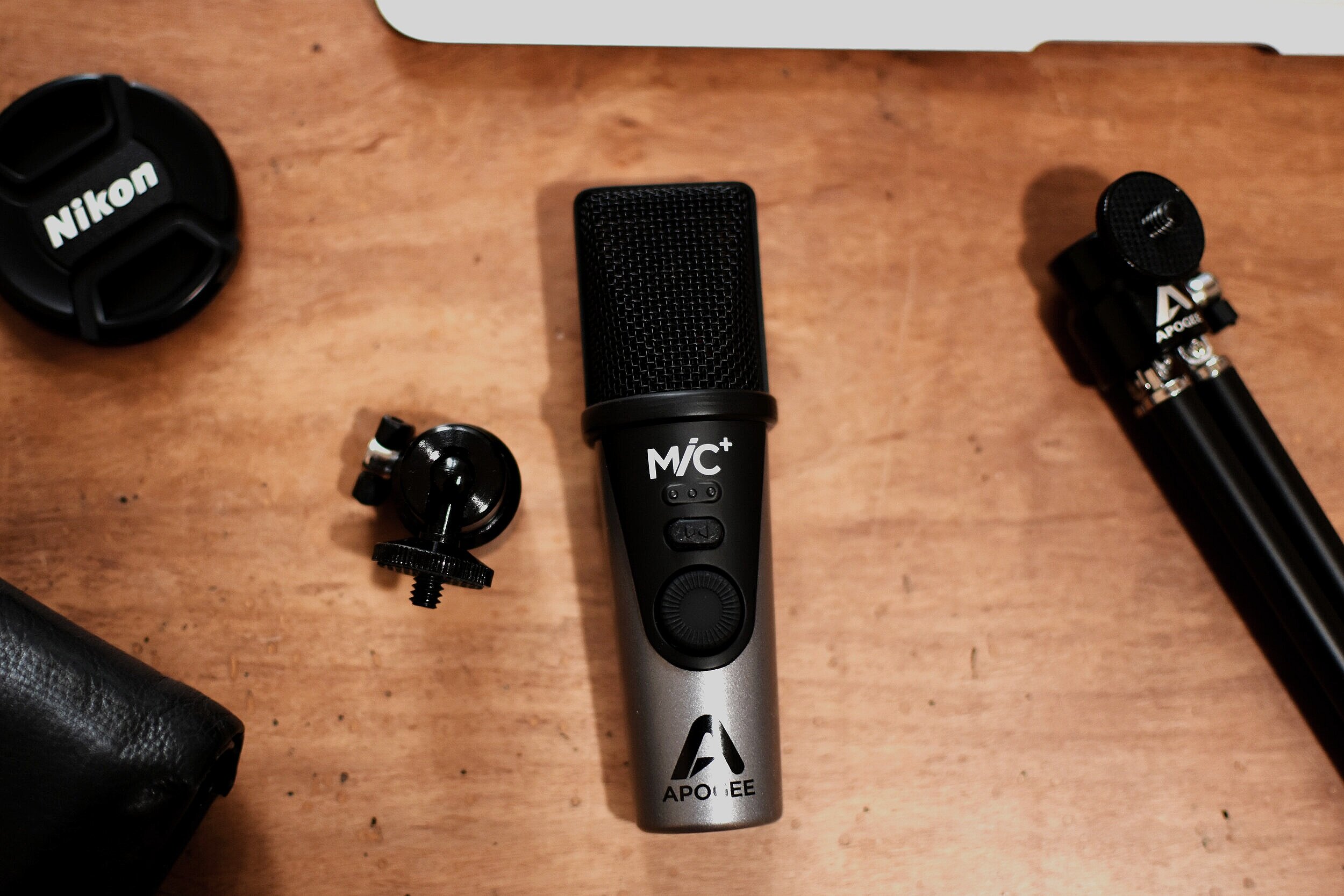Apogee MiC+ on a Classical Guitar
Apogee´s new USB microphone promises improved sound quality and lower noise floor from its predecessors.
Apogee MiC+ on it’s Tripod
I wanted to buy a USB microphone for some time now but the ones that I have tried in the past didn't convince me. USB microphones are usually guilty of high self-noise that can be quite problematic when recording such a subtle instrument as the classical guitar. Additionally, since they are mainly aiming for voice-overs, vocal recordings, podcast and such activities, they are usually quite bright for my tastes.
The new MiC+ is definitely an improvement over the older versions. The self-noise is audible in comparison to my normal setup but I don't find it to be a problem for non-commercial uses. It is also a little bit on the bright side, but natural enough for use with a classical guitar and other acoustic instruments.
Apogee MiC+ Connections
It seems very well made and I believe it can take some beating, but don't forget it is a sensitive condenser capsule in there, so don’t drop it.
Apogee includes in the package everything you need to start recording right away; desktop tripod, microphone stand adaptor and USB Type A, USB Type C and Lightning cable. My only gripe is that the supplied cables are rather short, connecting the MiC to a Desktop or Laptop computer will be proven a challenge.
Comparisons
A few diffefent recording options.
My next task was to see how the MiC+ compares with several different options; alternatives that have clear-cut strengths and definite uses, but I consider them to fall into a similar budget. From a tiny portable recorder (Olympus LS-P2), to a budget SDC (Line Audio CM3), to a higher priced LDC (Neumann TLM102).
Olympus LS-P2
+ the cheapest, the smallest, doesn't require any additional gear, it is stereo
- most self noise, although its mids are sweet-sounding, the sound is somewhat narrow and small
Apogee MiC+
+ affordable, comes with everything you need and it only requires a phone/tablet or computer to work, a decent headphone output
- noisier that the CM3 or TLM102, much brighter, feels cheaper
Line Audio CM3 (read my review)
+ smooth and natural sound, no colour, small, cheap, comes with plastic case
- needs decent preamps to avoid added noise, not very detailed, needs an audio interface/cable/stand (additional cost)
Neumann TLM102 (read my review)
+ clear and defined sound, nice articulation, a little bit of colour but never harsh, practically noiseless
- needs an audio interface/cable/stand (additional cost), big (actually it is very-very small for a LDC, but for the sake of this comparison), expensive
Conclusions
All in all, it is a great mini microphone and although it is not meant to replace a discrete signal chain with high end microphones, preamps and converters, having access to such equipment when I'm on the road is not usually an option and the MiC+ comes to fill the gap as it sounds better than most portable recorders and it fits in the pocket of my jacket.








